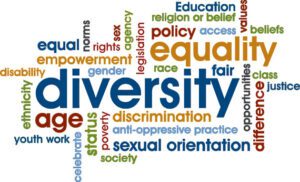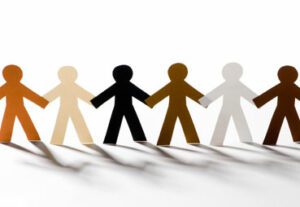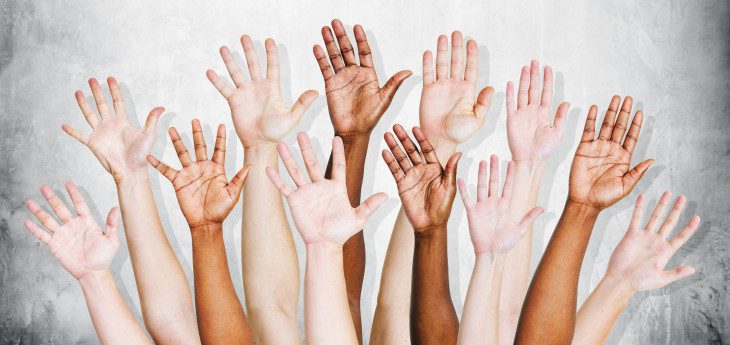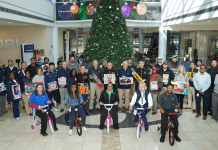Diversity continues to be a hot-button topic across many industries including automotive.
You don’t have to look very far to find insights addressing this important issue, an example being a recently published blog post on the National Automobile Dealers Association website that discusses some of the ways the automotive industry is embracing diversity.
There’s a good reason why diversity is and should be part of the conversation about the future of automotive: diversity (and the competencies it enables) is essential for the industry’s survival.
Ongoing Transformation
For the automotive industry, transformation is an ongoing phenomenon. The face of the consumer population is changing dramatically, and so are the digital tools available for dealerships to attract customers, such as machine learning and voice assistants. The popularity of ride-sharing and the advent of autonomous vehicles are challenging our fundamental assumptions about car ownership. You know the narrative about change. You’re living in it.
I believe that succeeding in this world of constant change requires customer-centricity and adaptability, which are byproducts of having a culture of diversity in the workplace.
Being Customer-Centric
You aren’t going to grow unless you understand your customer. And in the United States, the face of the automotive customer is changing, dramatically. Consider that:
- Women play a leading role in 85 percent of auto purchasing decisions.
- Hispanics account for 35 percent of new vehicle sales growth.
- Blacks spend $1.2 trillion annually, and they were the demographic segment most likely to purchase vehicles in 2017.
As the consumer population changes, dealerships composed of diverse teams are in the driver’s seat. They’re more empathetic to the wants and needs of their customers. And they’re more approachable. Think about it: as more consumers become equipped with tools that enable them to review and select the salespeople they want to work with, it’s not too difficult to guess which kinds of dealers are going to appeal to a diverse car-buying population.
Being Adaptable to Change
I believe that when you surround yourself with people who are not like you, you improve the quality of your problem solving and decision making and become more adaptable to change — such as changing customer preferences, new technologies, or new approaches to dealership management and sales. You are more likely to be that type of person who eagerly reads both positive and negative personal reviews of your dealership to improve.
Why? Because the crucible of different perspectives forges a willingness to learn.
Learning agility — or the ability to learn from experiences and then apply what you know to navigate an unfamiliar situation – is an essential trait for people who are going to succeed in the constantly changing automotive industry. Dr. Carol Dweck refers to this learning agility as the growth mindset, or a mindset of embracing the new instead of clinging to fixed ways of doing things.
For example, learning agility makes it possible for a dealership’s staff to adapt to the changing face of the customer that I cited. Changing how you do business to adapt to an increasingly multicultural population means shedding the “This is how we’ve always done it” mentality and learning the nuances of doing business with different customers from diverse cultures and backgrounds.
Developing learning agility requires you to sharpen skills such as critical thinking and collaboration so that you make better decisions — which is what happens when diverse teams work together, according to a Harvard Business Review article, “Why Diverse Teams Are Smarter.”
The article cites tests that show diverse teams are more likely to re-examine their assumptions, remain objective, and arrive to smarter conclusions. According to the article, people who operate in multi-cultural teams are more likely to become cognizant of their own latent biases and assumptions that hamper learning.
This finding is similar to a 2014 McKinsey study, Diversity Matters, which concludes that work teams representing a mix of different lifestyles and backgrounds challenge each other more – which leads to breakthroughs in thinking.
In other words, not only do you learn, but you start innovating, or creating new ways of doing things yourself in addition to learning from someone else. By contrast, homogeneous groups of people are more likely to think the same way and remain in an echo chamber of familiarity.


The team also relies on social get-togethers such as pot-luck dinners to appreciate each other’s backgrounds and complementary skills; and each team member completes a DiSC Profile, a tool that helps a team understand everyone’s behavioral differences free of judgment.
As a result, Cars.com deploys on average new code 30 times a day (versus 30 times a week a few years ago), and the company validates new product ideas faster and more effectively than Cars.com has ever done before, as reported in Built in Chicago.
Diversity Starts with Your Own Mindset
Hiring and developing a more diverse team starts with a commitment to inclusivity from the top. But where does that commitment come from? Commitment comes from doing little things to build your awareness and get yourself more comfortable being around people who are not like you. It can start with finding and reaching out to people inside or outside of work who spend their time differently from you. Join a new club, eat at a different restaurant, find new places to visit; essentially get out of your routine to gain new experiences and make different connections. Over time, these small commitments to exploration create new perspectives and form connections.
At work, commitment starts the same way: changing your habits. Doing so might look like listening with greater intent, reflecting on what you heard, and inviting people to share their opinions in a safe zone, free of worry and critique.
Your future depends upon your ability to adapt. Make a commitment to learn to do just that.








